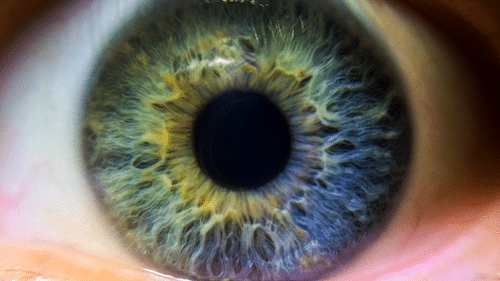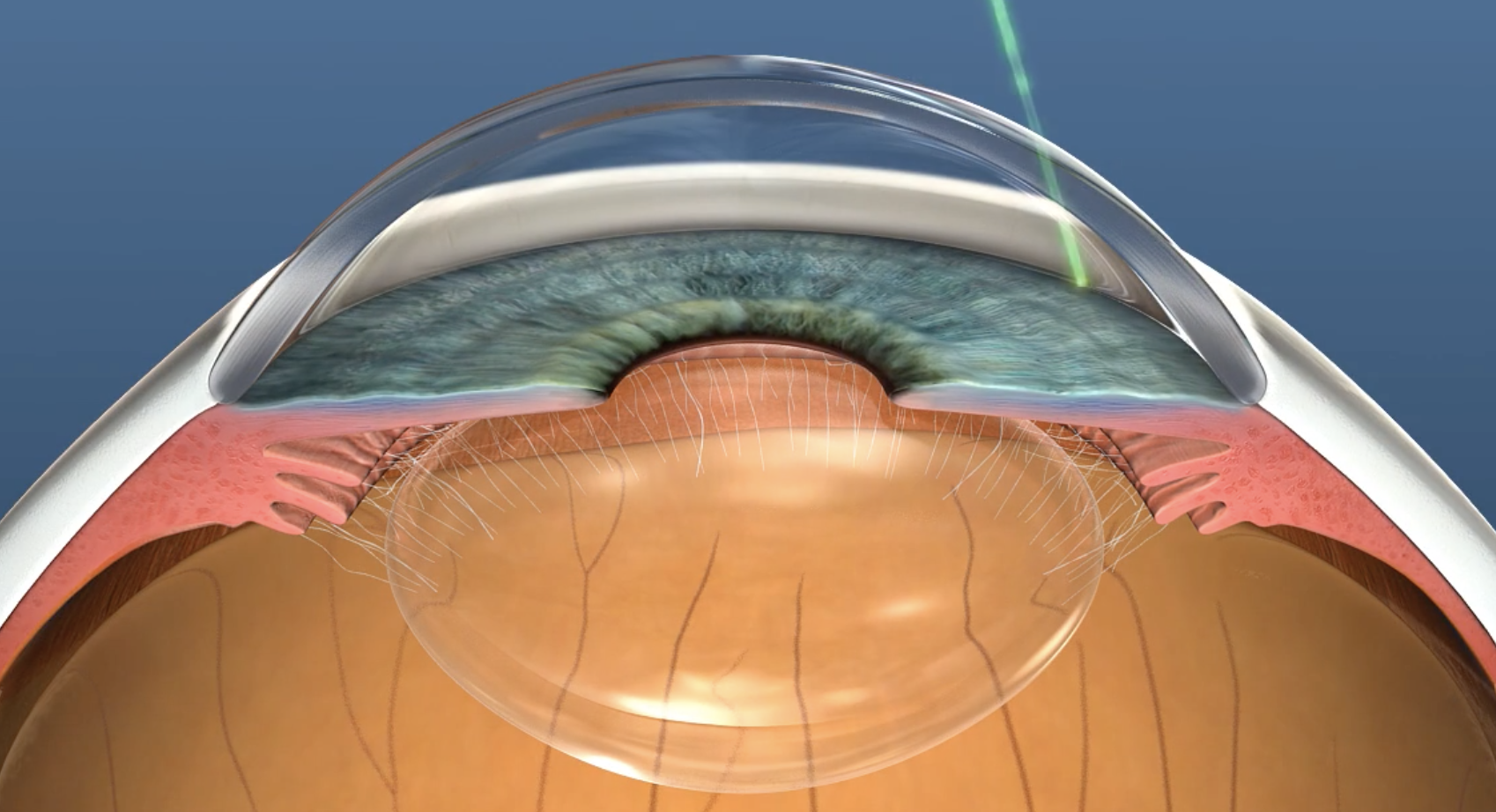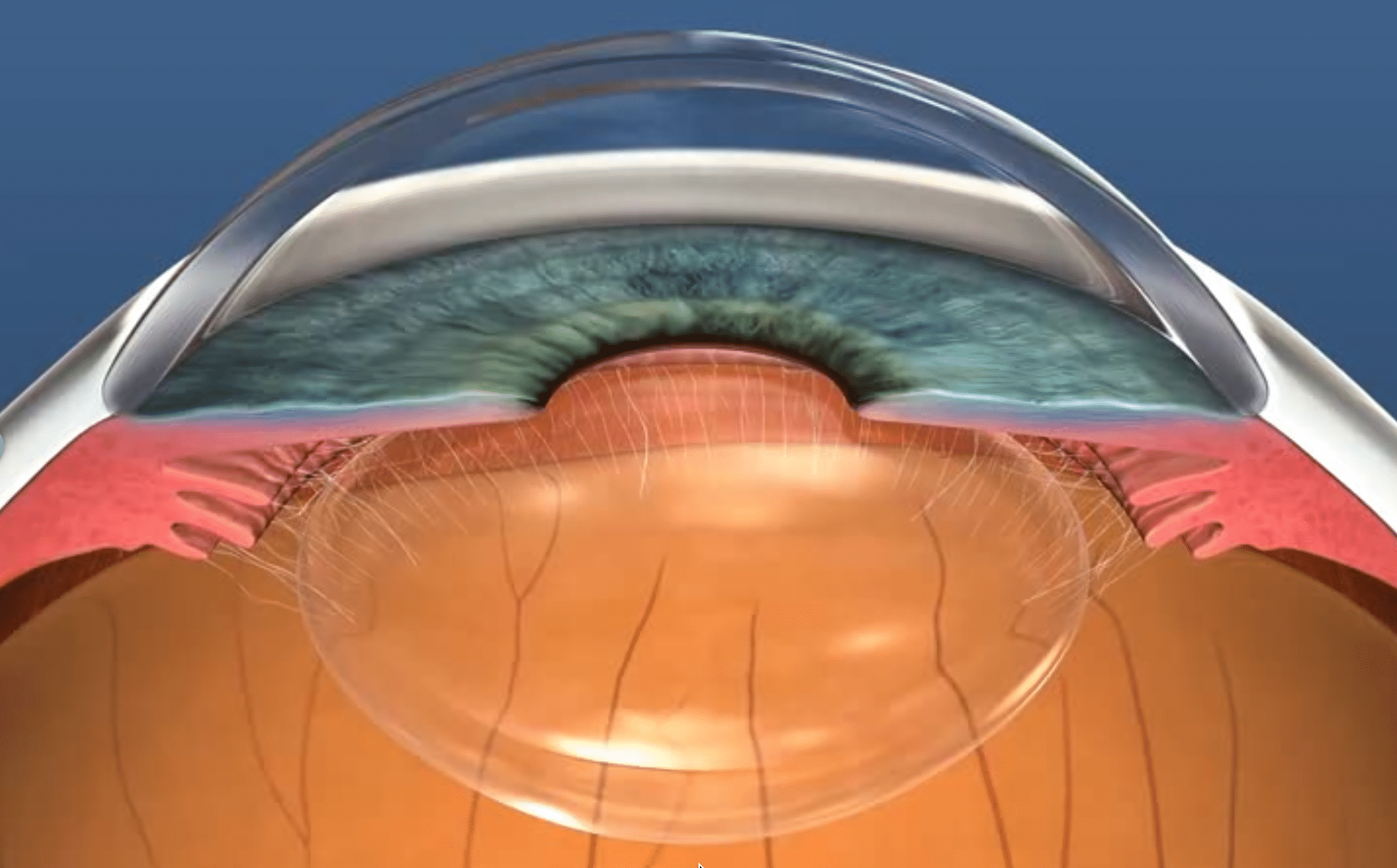
Selective laser trabeculoplasty (SLT)
A simple, yet highly effective, light-based procedure that reduces eye pressure in the treatment of glaucoma
Learn moreDiscover selective laser trabeculoplasty (SLT)
The gentle alternative for lowering eye pressure in glaucoma

What is glaucoma?
Glaucoma is a group of eye diseases commonly caused by an increased pressure inside the eye caused by a buildup of excess fluid. Treatment is aimed at lowering eye pressure to prevent vision loss.

Understanding glaucoma
Normal eye
In a healthy eye, a fluid called aqueous flows freely throughout the eye and travels through an internal drainage system.
Glaucoma
If the drainage system is blocked or partially obstructed, the natural pressure in your eye may increase. When eye pressure becomes too high, the optic nerve can become damaged causing blurred vision, and if left untreated, vision loss or blindness.

The recommended treatment for glaucoma
Selective laser trabeculoplasty (SLT) is a simple, yet highly effective light-based procedure that reduces eye pressure in the treatment of glaucoma and ocular hypertension. It is performed in the office and typically takes no more than five minutes.
In a landmark study SLT provided better eye pressure control, a greater chance of being medication-free, and reduced the risk of glaucoma deterioration and need for surgery compared to eye drops.
Selective laser trabeculoplasty (SLT)
The gentle and natural therapy

What is SLT?
Also known as Selective Light Therapy, SLT is a simple, yet highly effective laser procedure that reduces the intraocular pressure associated with glaucoma and ocular hypertension. It is performed in the office, and typically takes no more than five minutes.
How does SLT work?
SLT uses short pulses of low-energy light to target the melanin, or pigment, in specific cells of the eye. In response, the body's natural healing mechanisms go to work to rebuild these cells. This rebuilding process improves drainage and lowers eye pressure.

-
Designed to lower eye pressure
Over time, your eye's natural drainage system gets clogged.
-
Targeted therapy
SLT targets specific cells in the drainage channel, leaving the non-pigmented cells - as well as the rest of the eye - untouched and undamaged.
-
Treating the eye's natural drain
SLT is designed to restore the natural outflow, lowering pressure within the eye.
The smart choice is SLT.
To manage your glaucoma or ocular hypertension
Is SLT right for me?
If you have glaucoma, you may benefit from a reduction in eye pressure and/or a reduction in medication with SLT.
In a major clinical study, 75% of eyes treated with SLT were drop-free at 3 years.

Dr Nathan Kerr
Melbourne Ophthalmologist and Glaucoma SpecialistSLT
Advantages available in melbourne- Lowers eye pressure
- Non invasive
- Painless
- Rapid recovery
- Most people are drop-free
- Helps avoid eye surgery
- Can be repeated if necessary
Who may benefit from SLT?
It is necessary to first undergo an eye examination to determine if you are suitable for SLT. If you fit into any of the following categories, you may be a candidate for SLT:
Open-angle glaucoma
If you been diagnosed with primary open-angle, pseudoexfoliative, or pigmentary glaucoma.
Problems with medication
If you are intolerant of glaucoma medications, or have difficulty taking them as prescribed.
Medications are ineffective
You are taking eye glaucoma drops but need additional eye pressure lowering.
Failed laser
If you have a history of failed argon laser trabeculoplasty (ALT).
Experienced Glaucoma Specialist
Dr Nathan Kerr has performed thousands of SLT procedures and regularly audits his results to ensure he is delivering the best possible results.
book an appointment
Frequently asked questions
Learn more about SLT
What is SLT?
Selective laser trabeculoplasty, also known as SLT, is a simple, yet highly effective laser procedure that reduces eye pressure associated with glaucoma. It is performed in the office, and typically takes no more than 5 minutes.
How does SLT work?
SLT uses short pulses of low-energy light to target the melanin, or pigment, in specific cells of the affected eye. In response, the body's natural healing mechanisms go to work to rebuild these cells. This rebuilding process improves drainage and lowers eye pressure. The surrounding, non-pigmented cells - as well as the rest of the eye structure - are untouched and undamaged.
What happens during the SLT procedure?
Prior to treatment, eye drops are administered to prepare the eye and provide mild anaesthesia. Then, gentle pulses of light are delivered through a specially designed microscope. The entire process takes just a few minutes. When it's complete, you may be treated with eye drops, however these are often not required.
Does SLT hurt?
No. SLT is painless.
What will I experience after SLT?
You may have mild discomfort, redness and blurred vision for a few days following the procedure, generally subsiding in 5-7 days. These symptoms rarely cause harm and you will be monitored after the treatment.
How soon will I recover after SLT?
You may find your vision blurry for a couple of hours after the laser, so it is recommended that you do not drive afterwards. Otherwise, there are no restrictions on your activities after laser treatment. Most patients return to work the same or following day.
How quickly does SLT lower eye pressure?
SLT uses short pulses of low-energy light to tigger the body's healing mechanism. This process takes 6-8 weeks to improve the drainage of your eye and lower eye pressure.
What are the risks?
SLT laser is a very safe procedure. It is extremely rare to have any visual problems such as swelling of the cornea or macula. These problems usually resolve on their own and can otherwise generally be treated if they do occur.
Are there any alternatives?
Medicated eye drops are an alternative form of treatment of open-angle glaucoma; however there are side effects, and medications aren't always effective for all patients - and you have to remember to take your medications every day.
If non-surgical methods fail, surgery may be attempted to create or enhance the eye's drainage channel. These procedures are invasive and carry a risk of infection or bleeding.
If you liked this page, please share it on social media to let people with glaucoma know about selective laser trabeculoplasty.

